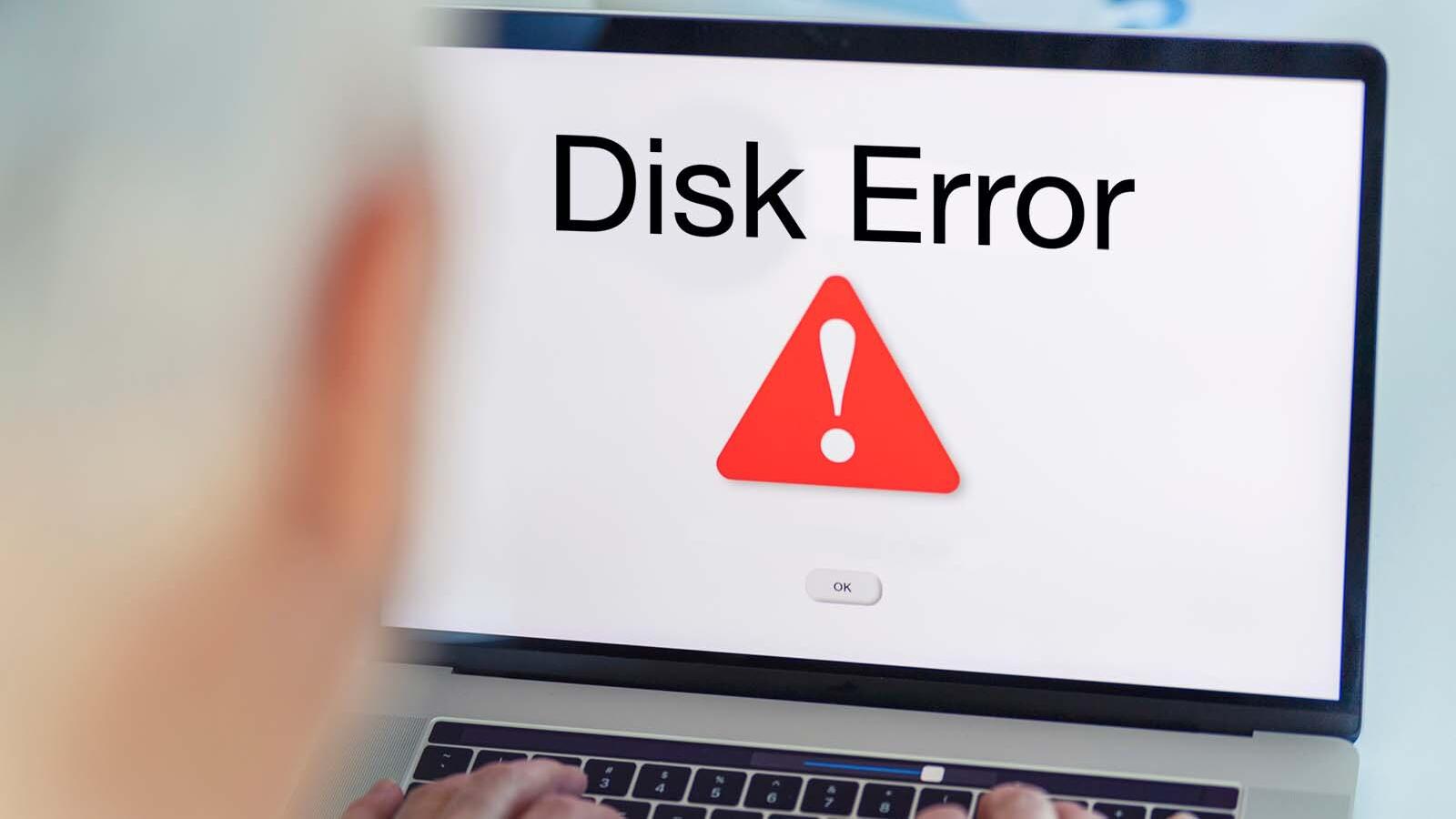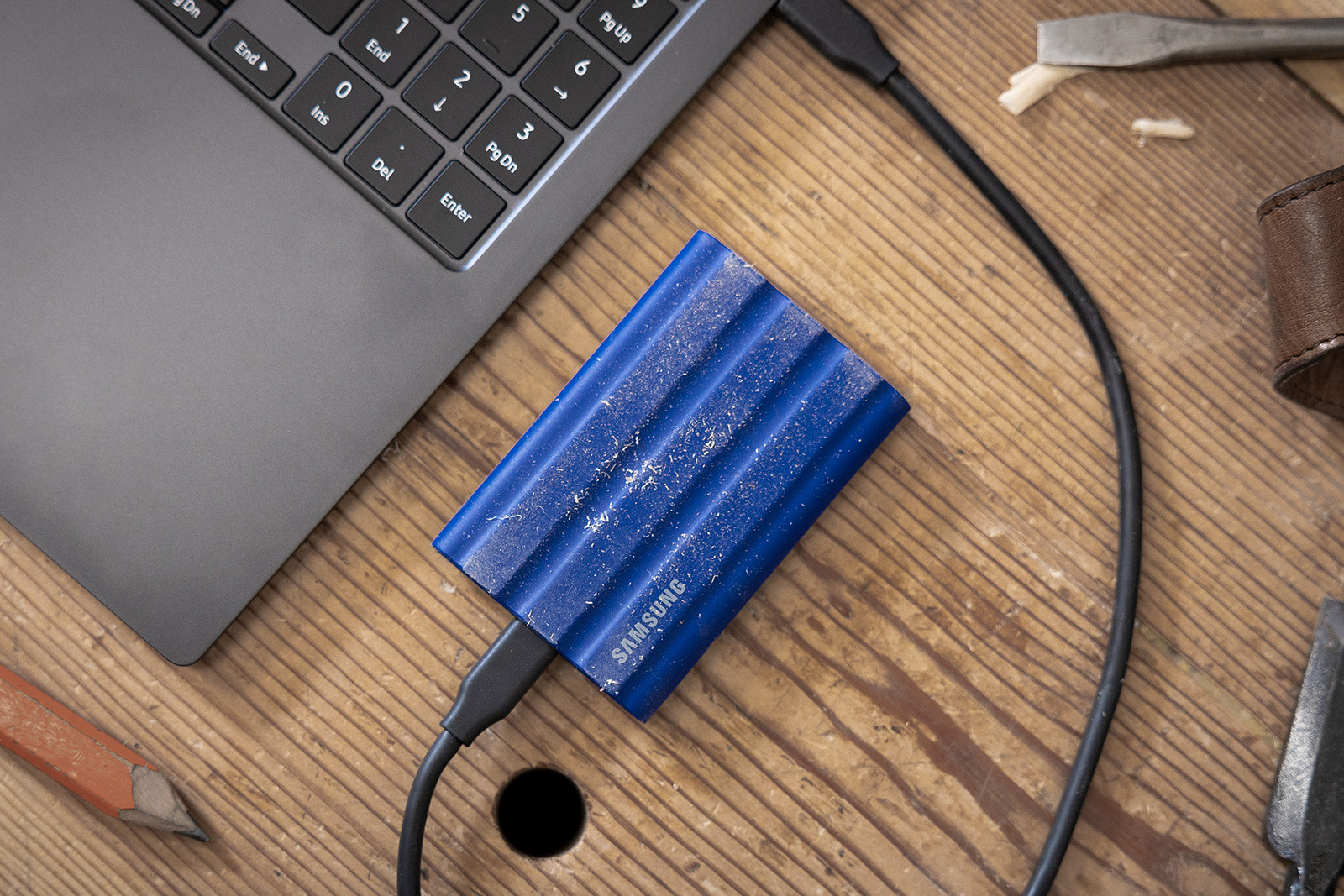It’s a nightmare scenario: your Mac has been playing up for weeks and you’ve been ignoring it, or just haven’t been able to figure out how to fix it. Then it refuses to start up. Why didn’t you make that backup? Is there any way you can get back the lost data from your Mac? Luckily there are apps that can recover your lost photos and damaged files from your failed Mac’s hard drive.
Data recovery apps, like the ones we have reviewed below, can recover files with relative ease, as long as the directory indicating where files were originally stored is salvageable. If that isn’t the case, the software can scan the data for familiar patterns that would denote a file type. Once it finds a file type, there’s a good chance that there will be data in that file.
Whether you’re a casual user scrambling to recover your lost files on your Mac, or a full-time tech shop doing everything it can to retrieve a client’s most critical documents from a dying hard drive, these are the data recovery apps that get our recommendation.
PROMOTION
Data recovery software for Mac – EaseUS
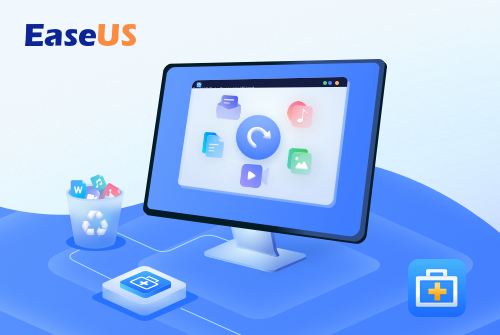
Recover lost data in 3 simple steps: automated scan, preview, and one-click recovery. Cover any file format and deal with data loss issues. Undelete files from the Mac-based hard drive, fusion drive, SSD, USB drive, memory card, digital camera, and more. Macworld recommended, and a great choice for both Mac and Windows users.
Now 25% OFF Exclusive Code: MACWORLD25
Looking to recover data from a iPhone? Read: Best data recovery apps for iPhone.
Best data recovery software for Mac 2025
Here’s our pick of the best recovery software for Mac we have reviewed.
Recoverit, Wondershare: Best Mac data recovery software
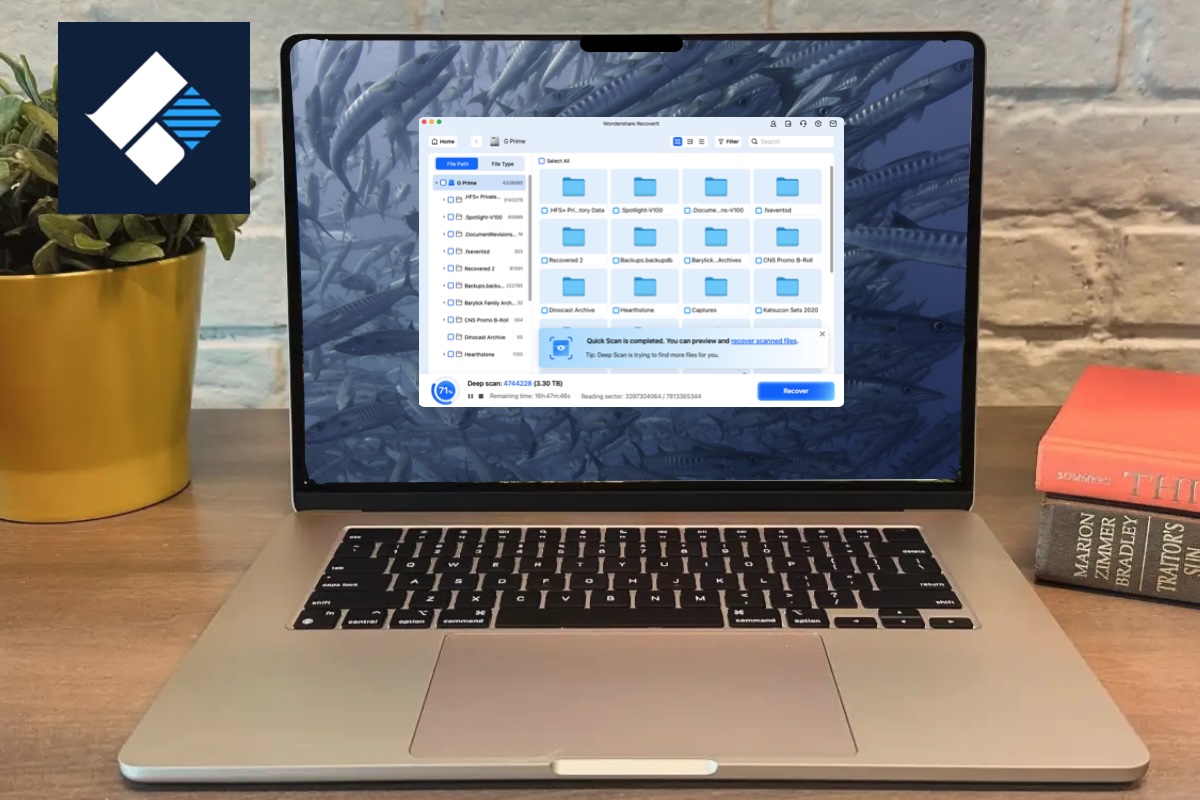
Pros
- Clean, inviting user interface
- Good set of tools
- Good performance
Cons
- Problem with USB boot drive creation module
Price When Reviewed:
1 month/2 Macs: $79.99 (usually $109.99); 1 year/2 Macs: $89.99 (usually $139.99); perpetual license/2 Macs: $139.99 (usually $169.99)
Best Prices Today:
Recoverit by Wondershare is centered around the usual modules that you might see in this kind of suite: Hard Drives and Locations and SD Card for file recovery, Enhanced Recovery and Corrupted Video Repair for video and photo restoration and System Crashed Computer and NAS and Linux for additional recovery features.
There’s a friendly home screen and user interface and the modules work as expected. Data recovery for hard drives, locations, and SD cards is simple and reliable, with Recoverit executing both a quick scan and diving into a deep scan.
The video and photo repair modules work well with damaged files. The SD Card module was able to sift through a damaged 8GB SD card, pull some video data thought lost, and deliver the data back cleanly to a recovery folder without issue.
Remote-based utilities allow for network-based drives to be located or accessed manually to have data recovered from them. The program can also save recovered data to a NAS drive or Google Drive, which is a nice feature.
We had some problems with the USB boot drive creation module, but this might be due to Apple’s complications.
Wondershare Recoverit presents an excellent data recovery package at a not-unreasonable, price. The company also offers discounts for students and educators, and small and medium businesses. While no trial version exists, the free version allows for all of Recoverit’s features to be used, with data recovery capped at 100 megabytes.
Read our full
Wondershare Recoverit review
Stellar Data Recovery for Mac: Best for complicated recoveries
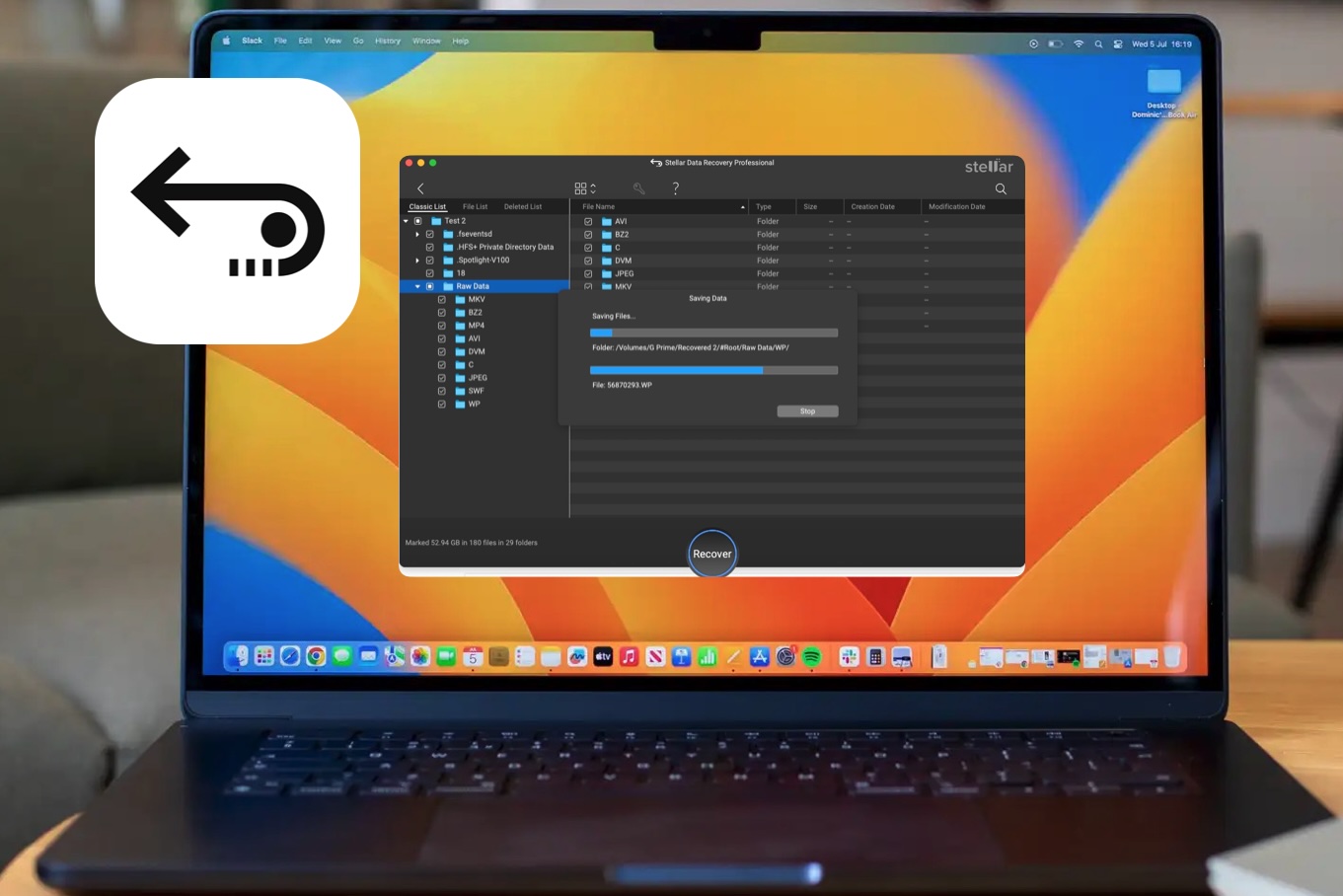
Pros
- Quick, clean interface
- Good data recovery tools and modules
- Impressive net-based recovery module
Cons
- Repeated crashes for Clean Up Junk Files module
- Activation bugs
Price When Reviewed:
Standard edition: $79.99 (currently $69.99) a year, or $129.99 (currently $99.99) for a lifetime license. Professional version: $129.99 (currently $99.99) a year, or $199 (currently $149) for a lifetime license. Premium edition: $209.99 (currently $99.99) a year, or $319 (currently $199) for a lifetime license.
Best Prices Today:
Stellar Data Recovery for Mac focuses on recovering data via standard scans, deep scans, drive image creation, and other recovery tools. It is available as a free trial, with standard, professional, and premium editions available on yearly or lifetime contracts. The software supports both HFS+ and APFS volume formats and can be installed easily.
Stellar Data Recovery’s main strength is its extensive data recovery engine, which supports hundreds of file formats and allows users to search and recover by file type, headers, and attributes. It also features a good scan management engine that allows users to save and work from previous scans, and an image creation feature that allows users to create a byte-for-byte image of a volume that can be restored later.
One interesting feature is the Recover Non Booting Mac module, which allows users to log into their Mac’s recovery partition, load Terminal, and enter a command to open a remote version of Stellar Data Recovery (more details in our full review). Other modules such as Search Large Files and Search Duplicate Files perform well and provide a comprehensive look at your drive.
The complete array of modules worked well with test drives, recovering data as needed, and snagging as much as possible.
Unfortunately, we did experience some problems. Stellar’s Clean Up Junk Files crashed the application repeatedly and had to be force quit.
Other issues included activating the serial number, which took several days and multiple calls and emails to sort out. Additionally, Stellar Data Recovery refused to appear in the macOS Recent Items menu, preventing it from being quickly launched. Even after activating a Professional tier account, the software still presents an “Upgrade” button on its main menu, which seems to be asking for more money to be thrown in the company’s general direction.
Despite these failings, Stellar Data Recovery for Mac is a good program able to dig deep to help reconstruct and recover deleted data. There’s also Stellar Data Recovery for iPhone.
Read our full
Stellar Data Recovery for Mac review
Data Rescue, Prosoft Engineering: Compelling toolset for experts
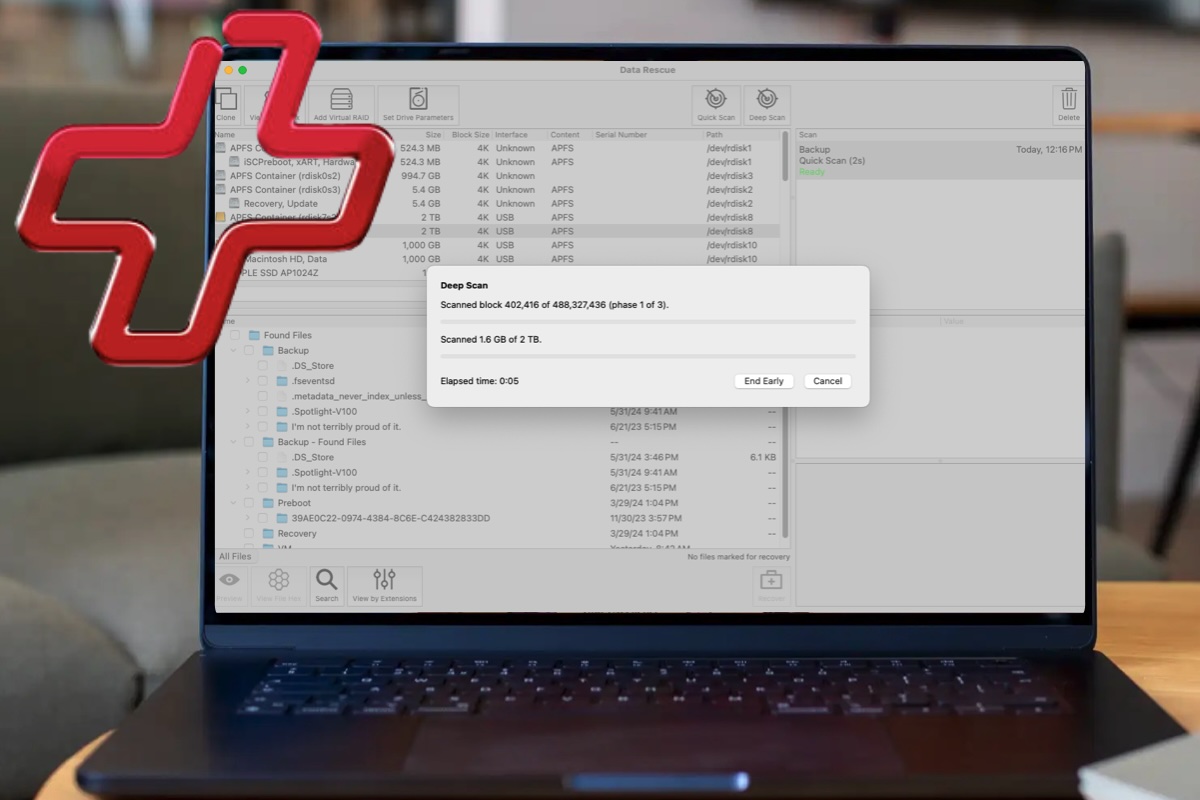
Pros
- Excellent toolset and recovery system
- Helpful Scan Management
Cons
- High subscription price
- Last update (v6) in 2023
- Inadequate tech support
- Unable to create Sonoma recovery drive
Price When Reviewed:
Standard license: $79 for a 30-day; Professional license: $399 for one year
Best Prices Today:
Data Rescue offers some excellent drive management and data recovery features, albeit at a steep price for occasional users.
The software supports older versions of macOS and requires macOS 10.12 (Sierra) or later. Users can download the software and assign full drive access, with a trial offering up to 1GB of data recovery for free. The company offers a 30-day standard license as well as a pricy professional license.
The software has a compelling toolset, including Quick Scan or Deep Scan, view hex tables, secure erase, set drive parameters, manage virtual RAID setup, and work with numbered sectors on drives and allocation blocks. It allows users to work with up to 15 scans, pausing and resuming as needed – handy if you’re several hours into a Deep Scan. The software runs well in the background.
Data Rescue 6 can create clone and recovery drives, handling different data strategies such as Straight, Reverse, Bisect, and Segment. However, it does not offer an option to create a macOS Sonoma recovery drive as of July 2024.
There are other limitations. If the drive is mechanically failing, it’ll be harder for data to be pulled and reconstructed.
Technical tools in Data Rescue 6 offer plenty to work with, but can get you in trouble if you aren’t familiar with them. For example, setting the wrong drive parameters or boot point can require troubleshooting.
Overall, Data Rescue 6 offers excellent tools, but Prosoft should address issues like lack of customer responsiveness, the lengthy time between updates, the high, subscription-based price tag, and a lack of a tutorial system.
Read our full
Data Rescue review
Disk Drill Pro, CleverFiles: Reliable and friendly data recovery
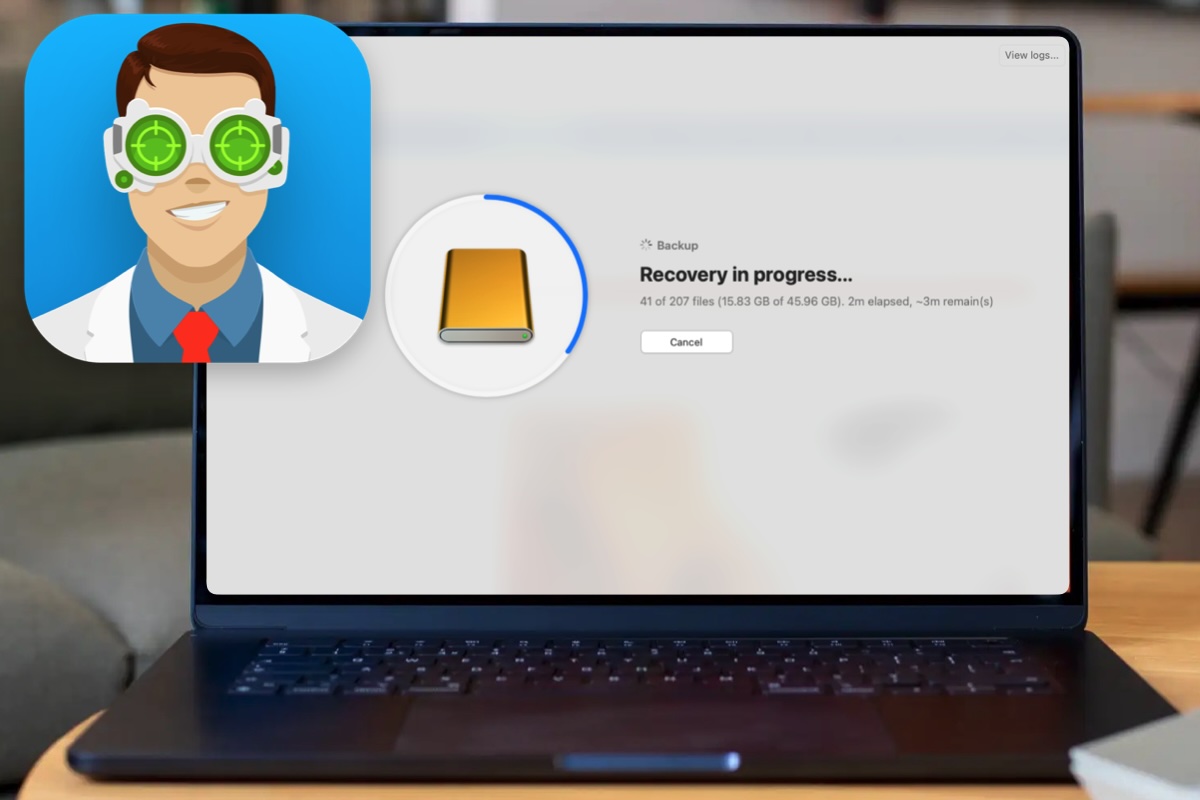
Pros
- Friendly interface
- Helpful YouTube videos
- Good data recovery performance
- Data Shredder utility
Cons
- Occasional crashes
- Failed to create viable boot drive
Price When Reviewed:
Basic: Free; Pro: $89; Enterprise: $499 (pay extra for lifetime upgrades)
Best Prices Today:
Disk Drill Pro from Cleverfiles is designed to recover data and rebuild deleted files on Macs and various other platforms and devices. It works with standard macOS file formats like HFS+, Mac OS Extended, and APFS.
The basic version is available for free and can recover up to 500 megabytes of data. There’s a Pro version that supports one user and up to three simultaneous activations, paid for once with an additional expense for lifetime upgrades. The Enterprise edition has a similar extra expense for lifetime upgrades and supports 10 users and infinite activations with priority technical support and DFXML forensic data support.
Disk Drill Pro requires macOS 10.15 Catalina or later and offers several new features, including a RAID utility, NAS & Linux via SSH utility, tools for recovering data from iPhones, iPads, and Time Machine volumes, a scan session manager, S.M.A.R.T. monitoring, a macOS boot drive creator, a backup utility, a Clean Up utility to map drive storage, a duplicate file remover, a data shredder, and a free space erasure tool. YouTube-based tutorial videos are available.
Devices can be scanned over a Wi-Fi network, and the S.M.A.R.T. function provides data about drive temperatures, drive condition, and life percentage left. Disk Drill Pro runs the scan in the background and can bypass file permission errors on the data being erased. During our data recovery scans, more than 90% of deleted files were readily recovered.
Disk Drill Pro has some issues, such as the macOS Installer utility failing to produce a bootable volume after multiple tests, the Recent Sessions scan manager only sporadically working, and Disk Drill Pro crashing into the spinning rainbow wheel if a process is interrupted. However, it offers reliable data recovery from a wide variety of devices.
Read our full
Disk Drill Pro review
EaseUS Data Recovery Wizard for Mac: Decent free version
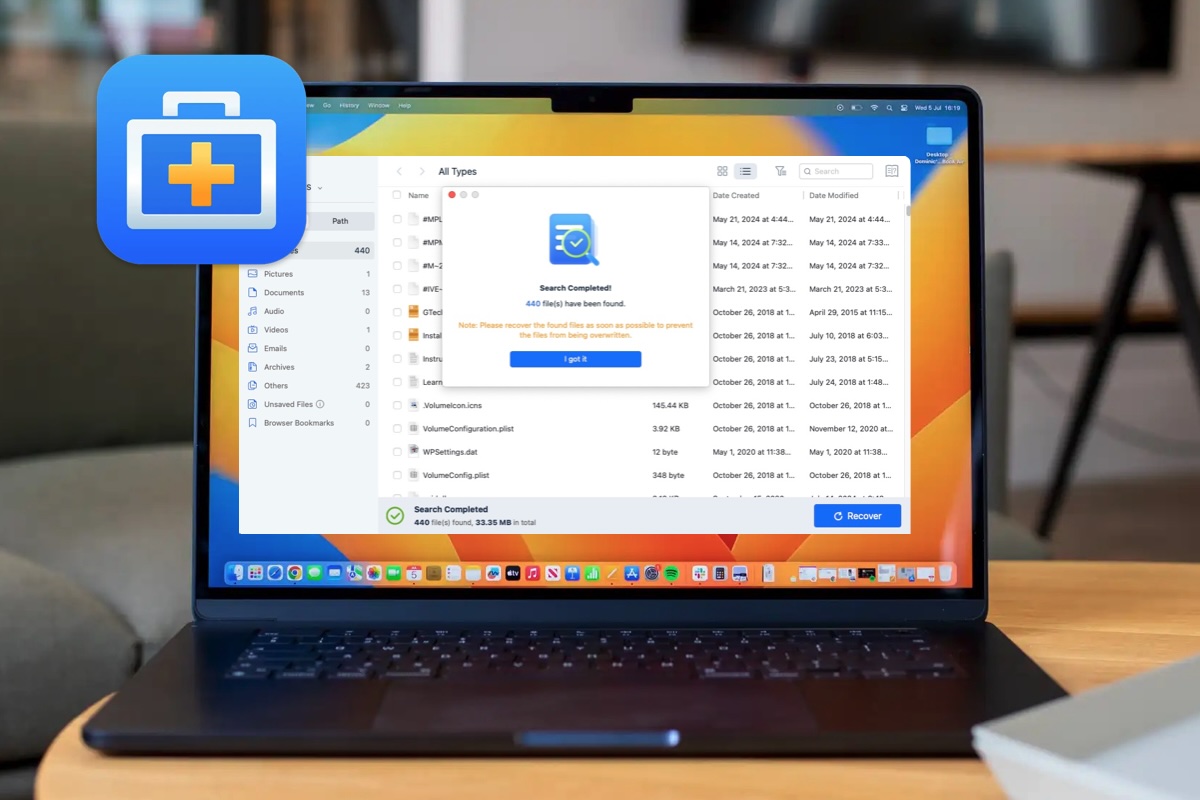
Pros
- Free version (up to 2GB)
- Great data recovery tools, file organization, categorization
- Video Repair tool
Cons
- High price
- Unbootable Mac module failed to locate drives
- Unable to log into cloud-based services
Price When Reviewed:
$89.95 a month for one Mac, $119.95 a year for one Mac, $169.95 for a lifetime upgrade plan for one Mac
Best Prices Today:
EaseUS Data Recovery Wizard for Mac is a Mac port of the Windows recovery software.
There is a free version with a decent 2GB recovered data cap as well as a paid version, which offers additional features such as 1-on-1 remote assistance, is available as a free trial, and requires Mac OS X 10.9 (Mavericks) or later to run. The paid version offers one license for one Mac paid monthly, yearly or as a lifetime upgrade plan that covers one Mac. The monthly and annual license payments auto-renew.
The software supports over 1,000 file types and offers specific modules for SD cards, cloud-based recovery, and storage. It supports APFS, HFS+, HFS, XFAT, FAT16, FAT32, exFAT, and NTFS, making it useful for working with drives from Windows and Linux machines.
The core functionalities of data recovery, reconstruction, and organization are its strongest points. A friendly interface guides users in choosing the volume to recover from and designating the target restoration drive or folder. The program organizes recovered and restored data logically into categories such as All Types, Pictures, Documents, Audio, Videos, Emails, Archives, and Others.
The SD Card function is useful, and the iCloud module makes it easy to log into iCloud (requiring Two Factor Authentication). The Video Repair module is enjoyable for exporting cleaner copies of old videos. However, some issues need attention, including the Unbootable Mac module, which has the user shut down their Mac, boot into Recovery Mode, then boot off an external server run by EaseUS. While this is a good idea in theory, the tool went into a continuous loop of being unable to mount my M2 Mac internal and external drives. I allowed this process to run overnight, and when I woke up in the morning, the drives had still not mounted and the tool could not be worked with.
The cloud tool was unable to successfully log into Dropbox for recovery, and the application required an administrator password every time the user launched it. Additionally, the software presented a customer feedback survey every time the user exited the program, which was infuriating.
Data Recovery Wizard for Mac excels at its core functions and presents an attractive means of recovering data from Mac, Windows, and Linux volumes with a nice array of platform and file format support. However, the high price point, Unbootable Mac module failures, constant need for an administrator password, and repeating customer feedback survey window let it down.
Read our full
EaseUS Data Recovery Wizard for Mac review
Data Recovery for Mac, iBeesoft: Data recovery and backup combined

Pros
- Friendly user interface
- Good data recovery
- Backup and video repair modules
- Nice price
Cons
- Crashed Mac module didn’t work
- Vague 60-day money-back guarantee terms
Price When Reviewed:
Personal License: $59.95; Lifetime License for $129.95
Best Prices Today:
iBeesoft’s Data Recovery for Mac functions as a data recovery and backup application and also includes a video repair utility for the AV nerds out there.
The app is based around several modules: Storage Devices, Crashed Mac Recovery, Video Repair, File Backup, and Search Records. There’s a user-friendly interface and helpful file categorizations, such as All Types, Pictures, Documents, Audio, Video, Emails, Archives, Others, and Unsaved Documents.
The software can scan through your list of mounted drives, looking for deleted files, reconstructing and recovering everything it can. It’s easy to select specific files or all files for a given recovery to an external volume once a scan is complete.
The Video Repair module allows you to drag and drop old video clips and upgrade their quality before exporting them. The Backup module allows you to specify files, folders, or an entire volume and back up a copy as a .dmg file, which can be easily restored later.
This is so far so good, but there are some elements to sort out. The Crashed Mac module is designed to offer an easily downloadable .dmg file to create a boot drive to use as an emergency disk to help recover data to an external hard drive, but the web server that hosted the file not working so the feature couldn’t be tested.
There’s a Personal License and a Lifetime License, as well as a free version (with a 500MB limit).
Data Recovery for Mac hones in on its core features well and is worth a look.
Read our full
iBeesoft Data Recovery for Mac review
Alsoft DiskWarrior
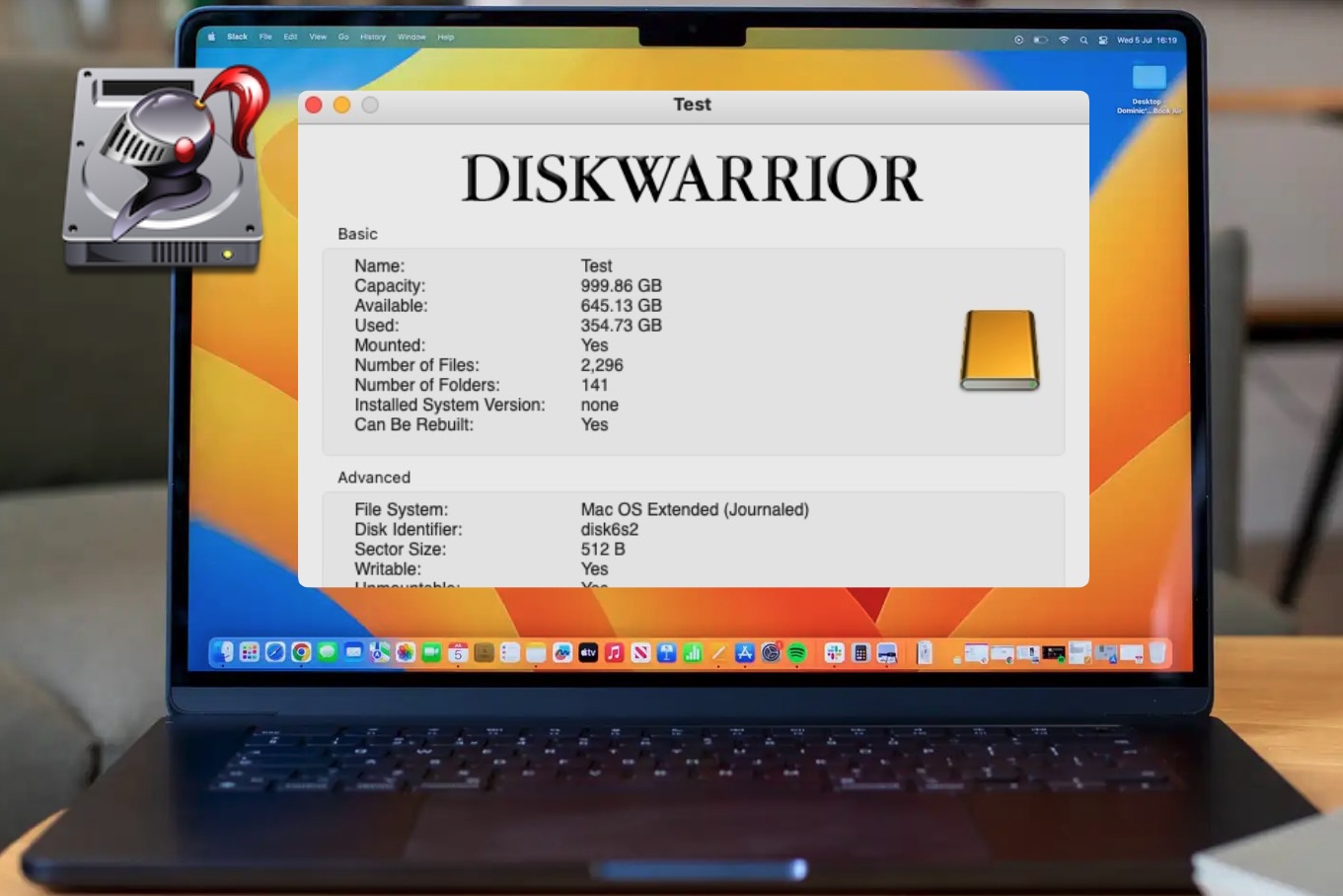
Pros
- Good user interface and performance
- Locates and sorts out file and directory errors
- Customization and configuration options
Cons
- Lack of APFS support
- High price
- Time Machine volume repair requires booting from included flash drive
Price When Reviewed:
$119.95 (plus $8.95 for shipping flash drive)
Best Prices Today:
Alsoft has been producing high-quality utility software for over 20 years. DiskWarrior, a popular application for recovering damaged hard drives, has been in use since 1998. However, the latest version of DiskWarrior 5.3.1, released in 2024, seems to be falling behind in software and file system support.
The software still supports the HFS+ format, FireVault 1 and 2, Core Storage for Fusion dries, RAID configurations, and disk images and sparse bundles, but it has not been upgraded to support the APFS format, which is increasingly prevalent on new Macs and Apple’s push towards this file system standard.
DiskWarrior is available as a bootable USB flash drive that can boot Macs running HFS+ format volumes. Its ease of use remains unchanged, making it easy to mount and unmount drives and volumes, perform quick tests, access technical specifications, set up automated diagnostics, and receive notifications through alerts, emails, AppleScript programs, or text messages.
However, there’s bad news: DiskWarrior 5.3.1 still lacks support for the APFS standard. As more drives are moving towards this file system, the company’s silence on this matter is concerning. A representative within the company confirmed that Alsoft is working on version 6.0, which will offer full APFS support. However, changes from Apple’s side, such as not allowing third-party kernel extensions and other technical changes, have made the development process more difficult and created more roadblocks than previous versions of DiskWarrior.
The lack of a free trial version of DiskWarrior 5.3.1 raises concerns about the steep new user price and upgrade price, especially when the software lacks APFS support and can only work with certain volumes.
Sometimes a great utility gets stuck in development. There’s still a great application to be had here, but Alsoft needs to put itself in a position where it can readily announce that an updated version will be out at a given date and that it will offer APFS support.
Read our full
DiskWarrior review
What is the best Mac data recovery app?
Our top choice right now is Recoverit from Wondershare because it does a good job recovering data, and at a reasonable price.
How we choose the best Data Recovery app for Mac
We approach this not only from an ease-of-use perspective for the user, but also in terms of which software can genuinely pull something useful from a disaster. It’s not always the best marketed or most expensive recovery application that succeeds, but something that can work with a volume, continue to test it, and not give up on it in terms of hardware condition and slowdowns. The software that you can leave to run overnight to recover data and have the best chance of waking up and finding something useful recovered, that marks the best software where Macworld is concerned.
Another factor we consider is that the best option will depend on a specific set of needs. For example, one option might be the best if you have a tight budget, while another option will be better for someone who will only use this software once, while the best option for someone who expects to need to use the software again and again will probably be quite different.
For that reason we specify who we recommend the app for. We also tend to only include the apps that we recommend in our group tests. If the app isn’t included here it may be because we don’t rate it as well as the ones in this round up.
What you should consider when choosing the best Data Recovery app
Outside of the price point (some applications can be considerably expensive, especially given the services they’re tied into), ease of use and overall approach are important factors to consider. Some applications will offer you all the options in the world, but through a nigh-terrifying user interface that asks you to identify specific hard drive sectors you’d like to identify and work with, which is beyond what a panicked user who might have lost their life’s data wants to deal with.
What you’re looking for is something powerful, capable of dealing with your damaged hard drive/volume, and capable of keeping it mounted on your Mac as it’s working through damaged sectors on a hard drive mechanism that may itself be failing.
Once this is complete, it’s a matter of whether the application can work steadily for the hours, days, or weeks that may be involved in slowly pulling the data to an external hard drive. From there, it’s a question of how the recovered data can be reconstructed and how quickly and easily the recovered data can be worked with (i.e., will you have to rename and reorganize thousands of files, will a specific file be able to be opened by the application that created it, etc.?)
In short, it’s a question of “Well, I’ve recovered hundreds of gigabytes of data, can I actually work with it or do I have to babysit it and rebuild the data and how much time have I saved in the long run?” This, combined with the expected price you’ll pay (either from an outright one-time purchase or annual or multi-year subscription), and best practices such as settings up local Time Machine and online backups help form what you should consider for a best-of-breed data recovery application, or a set of them. It’s not a question of if a hard drive will fail but when, and we’ll do everything we can here at Macworld to keep you informed and ready for when it eventually happens.
How we test Data Recovery software for Mac
When we test data recovery software we simulate the experience of those who lose data in real world scenarios. This includes everything from recovering accidentally deleted files, to attempting to recover data from a formatted disk.
We test with both rotational and solid-state media, using both newer and used drives. During the tests, we work to recover both large and small files as well as data that’s been deleted from multiple drive format functions. We compare ease of use, the software’s approach, what’s recovered, and how this meets the user’s expectations.
We also factor in reconstruction methods, and where this leaves the user (i.e., can a recovered image be easily opened, or will it require several additional steps to rename and open the file?) to determine what to make of the software and how best to rate it.
Why you can trust Macworld’s recommendations
Macworld’s Data Recovery app reviewer, Chris Barylick is an Apple-Certified Macintosh Technician with more than twenty years experience fixing Macs, dealing with people, and writing about it. In this time, he’s seen just about every scenario that can be conceived of, heard the wailing of people whose Macs were working great just the other day and whose hard drives are making strange clicking sounds and not booting, and everything in between. Throughout this time, his goal was always the same: Get the hard drive out of the computer, get it mounted, and figure out the best way to recover their data and their work, no matter what.
FAQ
Why does Data Recovery take so long?
Expect the data recovery process to be time-consuming as the app pieces the bits of files back together. With patience, most files that haven’t been overwritten should, in theory, be saveable.
Some drives can take days to fully scan, and the higher capacity they are, the longer the process. But if it’s irreplaceable photos or important documents that are lost, you can afford to wait.
Is there a free way to recover my lost Mac data?
Unfortunately, this sort of software is pretty much always going to have a high price associated with it before you can recover what you need–but if you’ve lost hundreds of treasured photos or the first 1,000 pages of your novel, then no price is too high, probably. Sometimes you can pay for the software for a month, do what you need to do and then cancel. Sometimes you must subscribe for a year. Other options allow you to buy it outright, but pay extra for future updates. Your own circumstances will influence which option is best for you. Additionally, many of these tools offer a trial so you can at least see what you should be able to recover before you spend your money.
There are a few techniques you can try before you spend money on an app though, as you’ll see in our How to recover data from a damaged Mac article.
How to avoid data loss
Prevention is better than a cure and we recommend adopting a regular backup routine going forward, so you’ll avoid this kind of situation again. For more tips on this, take a look at the best backup software for Mac and How to use Time Machine to back up a Mac.
Are data recovery apps/services safe, can you trust them?
Yes, they are safe, but you’re going to want to do some research and/or read some reviews to find something that works best for you. It does the software companies no good to have their data recovery software be something that damages your Mac’s data, and data recovery applications use extremely low-level hardware code to access data from failing devices, so there’s that to consider.
Still, there are several data recovery applications that offer free or trial periods to test the software, and you can always try these out for yourself. Read and listen to trusted sources, try various applications out for yourself (you can always try recovering data you’ve deleted from thumb drives with the trial versions of these applications), remember to set up Time Machine and online backups and your data should be safe. There’s a world of options out there and we’ll do what we can to help you find the best one for you.
How does data recovery software work?
Most data recovery software works to mount the potentially-failing volume that your data is on, then it has to work to keep it mounted and running as it scans the drive’s sectors, offers you options as to what you’d like to do with it, carries out the tests and data recovery options, and works to save the data to a functional drive prior to reconstructing it.
There’s a lot for it to carry out, and each data recovery application and the company behind it approaches it differently. Some might provide a very general, user friendly interface towards data recovery while others might offer extremely specific, technical functions to work with precise sectors of your hard drive. Some might provide an option to boot form an external USB thumb drive or Web-based operating system to try to recover your data, and each approach can yield different results
Why is data recovery software expensive?
Data recovery software has always been infamously expensive, but there are logical reasons for this. First, there’s an extremely significant amount of research and development involved in creating and updating this software, as it delves into low-lying system and firmware functions as to how the computer communicates with its hard drives and reads and writes data to and from them.
Additionally, data recovery software typically isn’t the kind of thing that’s initially purchased with a new computer (such as a copy of Microsoft Office, Adobe Creative Cloud, etc.), and tends to only be purchased in the event of a disaster wherein your data is at risk of loss.
As such, the data recovery software market tends to sell fewer copies and sometimes charges a higher price for the copies it does sell.
Finally, there are times where the software companies provide higher-end services and tech support, including shipping a damaged drive off for disassembly and data recovery. This can be considered a new service altogether and that much more expensive to reclaim damaged data.
For more advice about software for your Mac, iPad or iPhone see all our Best Picks and our latest macOS and iOS software reviews.
Macworld
It’s a nightmare scenario: your Mac has been playing up for weeks and you’ve been ignoring it, or just haven’t been able to figure out how to fix it. Then it refuses to start up. Why didn’t you make that backup? Is there any way you can get back the lost data from your Mac? Luckily there are apps that can recover your lost photos and damaged files from your failed Mac’s hard drive.
Data recovery apps, like the ones we have reviewed below, can recover files with relative ease, as long as the directory indicating where files were originally stored is salvageable. If that isn’t the case, the software can scan the data for familiar patterns that would denote a file type. Once it finds a file type, there’s a good chance that there will be data in that file.
Whether you’re a casual user scrambling to recover your lost files on your Mac, or a full-time tech shop doing everything it can to retrieve a client’s most critical documents from a dying hard drive, these are the data recovery apps that get our recommendation.
PROMOTIONData recovery software for Mac – EaseUS
Recover lost data in 3 simple steps: automated scan, preview, and one-click recovery. Cover any file format and deal with data loss issues. Undelete files from the Mac-based hard drive, fusion drive, SSD, USB drive, memory card, digital camera, and more. Macworld recommended, and a great choice for both Mac and Windows users.Now 25% OFF Exclusive Code: MACWORLD25Get It Now l Windows
Get It Now | Mac
Looking to recover data from a iPhone? Read: Best data recovery apps for iPhone.
Best data recovery software for Mac 2025
Here’s our pick of the best recovery software for Mac we have reviewed.
Recoverit, Wondershare: Best Mac data recovery software
Pros
Clean, inviting user interface
Good set of tools
Good performance
Cons
Problem with USB boot drive creation module
Price When Reviewed:
1 month/2 Macs: $79.99 (usually $109.99); 1 year/2 Macs: $89.99 (usually $139.99); perpetual license/2 Macs: $139.99 (usually $169.99)
Best Prices Today:
Retailer
Price
Wondershare (annual)
$89.99
View Deal
Price comparison from over 24,000 stores worldwide
Product
Price
Price comparison from Backmarket
Recoverit by Wondershare is centered around the usual modules that you might see in this kind of suite: Hard Drives and Locations and SD Card for file recovery, Enhanced Recovery and Corrupted Video Repair for video and photo restoration and System Crashed Computer and NAS and Linux for additional recovery features.
There’s a friendly home screen and user interface and the modules work as expected. Data recovery for hard drives, locations, and SD cards is simple and reliable, with Recoverit executing both a quick scan and diving into a deep scan.
The video and photo repair modules work well with damaged files. The SD Card module was able to sift through a damaged 8GB SD card, pull some video data thought lost, and deliver the data back cleanly to a recovery folder without issue.
Remote-based utilities allow for network-based drives to be located or accessed manually to have data recovered from them. The program can also save recovered data to a NAS drive or Google Drive, which is a nice feature.
We had some problems with the USB boot drive creation module, but this might be due to Apple’s complications.
Wondershare Recoverit presents an excellent data recovery package at a not-unreasonable, price. The company also offers discounts for students and educators, and small and medium businesses. While no trial version exists, the free version allows for all of Recoverit’s features to be used, with data recovery capped at 100 megabytes.
Read our full
Wondershare Recoverit review
Stellar Data Recovery for Mac: Best for complicated recoveries
Pros
Quick, clean interface
Good data recovery tools and modules
Impressive net-based recovery module
Cons
Repeated crashes for Clean Up Junk Files module
Activation bugs
Price When Reviewed:
Standard edition: $79.99 (currently $69.99) a year, or $129.99 (currently $99.99) for a lifetime license. Professional version: $129.99 (currently $99.99) a year, or $199 (currently $149) for a lifetime license. Premium edition: $209.99 (currently $99.99) a year, or $319 (currently $199) for a lifetime license.
Best Prices Today:
Retailer
Price
Stellar Info (annual)
$79.99
View Deal
Price comparison from over 24,000 stores worldwide
Product
Price
Price comparison from Backmarket
Stellar Data Recovery for Mac focuses on recovering data via standard scans, deep scans, drive image creation, and other recovery tools. It is available as a free trial, with standard, professional, and premium editions available on yearly or lifetime contracts. The software supports both HFS+ and APFS volume formats and can be installed easily.
Stellar Data Recovery’s main strength is its extensive data recovery engine, which supports hundreds of file formats and allows users to search and recover by file type, headers, and attributes. It also features a good scan management engine that allows users to save and work from previous scans, and an image creation feature that allows users to create a byte-for-byte image of a volume that can be restored later.
One interesting feature is the Recover Non Booting Mac module, which allows users to log into their Mac’s recovery partition, load Terminal, and enter a command to open a remote version of Stellar Data Recovery (more details in our full review). Other modules such as Search Large Files and Search Duplicate Files perform well and provide a comprehensive look at your drive.
The complete array of modules worked well with test drives, recovering data as needed, and snagging as much as possible.
Unfortunately, we did experience some problems. Stellar’s Clean Up Junk Files crashed the application repeatedly and had to be force quit.
Other issues included activating the serial number, which took several days and multiple calls and emails to sort out. Additionally, Stellar Data Recovery refused to appear in the macOS Recent Items menu, preventing it from being quickly launched. Even after activating a Professional tier account, the software still presents an “Upgrade” button on its main menu, which seems to be asking for more money to be thrown in the company’s general direction.
Despite these failings, Stellar Data Recovery for Mac is a good program able to dig deep to help reconstruct and recover deleted data. There’s also Stellar Data Recovery for iPhone.
Read our full
Stellar Data Recovery for Mac review
Data Rescue, Prosoft Engineering: Compelling toolset for experts
Pros
Excellent toolset and recovery system
Helpful Scan Management
Cons
High subscription price
Last update (v6) in 2023
Inadequate tech support
Unable to create Sonoma recovery drive
Price When Reviewed:
Standard license: $79 for a 30-day; Professional license: $399 for one year
Best Prices Today:
Retailer
Price
Prosoft Engineering (30-day license)
$79
View Deal
Price comparison from over 24,000 stores worldwide
Product
Price
Price comparison from Backmarket
Data Rescue offers some excellent drive management and data recovery features, albeit at a steep price for occasional users.
The software supports older versions of macOS and requires macOS 10.12 (Sierra) or later. Users can download the software and assign full drive access, with a trial offering up to 1GB of data recovery for free. The company offers a 30-day standard license as well as a pricy professional license.
The software has a compelling toolset, including Quick Scan or Deep Scan, view hex tables, secure erase, set drive parameters, manage virtual RAID setup, and work with numbered sectors on drives and allocation blocks. It allows users to work with up to 15 scans, pausing and resuming as needed – handy if you’re several hours into a Deep Scan. The software runs well in the background.
Data Rescue 6 can create clone and recovery drives, handling different data strategies such as Straight, Reverse, Bisect, and Segment. However, it does not offer an option to create a macOS Sonoma recovery drive as of July 2024.
There are other limitations. If the drive is mechanically failing, it’ll be harder for data to be pulled and reconstructed.
Technical tools in Data Rescue 6 offer plenty to work with, but can get you in trouble if you aren’t familiar with them. For example, setting the wrong drive parameters or boot point can require troubleshooting.
Overall, Data Rescue 6 offers excellent tools, but Prosoft should address issues like lack of customer responsiveness, the lengthy time between updates, the high, subscription-based price tag, and a lack of a tutorial system.
Read our full
Data Rescue review
Disk Drill Pro, CleverFiles: Reliable and friendly data recovery
Pros
Friendly interface
Helpful YouTube videos
Good data recovery performance
Data Shredder utility
Cons
Occasional crashes
Failed to create viable boot drive
Price When Reviewed:
Basic: Free; Pro: $89; Enterprise: $499 (pay extra for lifetime upgrades)
Best Prices Today:
Retailer
Price
CleverFiles
$89
View Deal
Price comparison from over 24,000 stores worldwide
Product
Price
Price comparison from Backmarket
Disk Drill Pro from Cleverfiles is designed to recover data and rebuild deleted files on Macs and various other platforms and devices. It works with standard macOS file formats like HFS+, Mac OS Extended, and APFS.
The basic version is available for free and can recover up to 500 megabytes of data. There’s a Pro version that supports one user and up to three simultaneous activations, paid for once with an additional expense for lifetime upgrades. The Enterprise edition has a similar extra expense for lifetime upgrades and supports 10 users and infinite activations with priority technical support and DFXML forensic data support.
Disk Drill Pro requires macOS 10.15 Catalina or later and offers several new features, including a RAID utility, NAS & Linux via SSH utility, tools for recovering data from iPhones, iPads, and Time Machine volumes, a scan session manager, S.M.A.R.T. monitoring, a macOS boot drive creator, a backup utility, a Clean Up utility to map drive storage, a duplicate file remover, a data shredder, and a free space erasure tool. YouTube-based tutorial videos are available.
Devices can be scanned over a Wi-Fi network, and the S.M.A.R.T. function provides data about drive temperatures, drive condition, and life percentage left. Disk Drill Pro runs the scan in the background and can bypass file permission errors on the data being erased. During our data recovery scans, more than 90% of deleted files were readily recovered.
Disk Drill Pro has some issues, such as the macOS Installer utility failing to produce a bootable volume after multiple tests, the Recent Sessions scan manager only sporadically working, and Disk Drill Pro crashing into the spinning rainbow wheel if a process is interrupted. However, it offers reliable data recovery from a wide variety of devices.
Read our full
Disk Drill Pro review
EaseUS Data Recovery Wizard for Mac: Decent free version
Pros
Free version (up to 2GB)
Great data recovery tools, file organization, categorization
Video Repair tool
Cons
High price
Unbootable Mac module failed to locate drives
Unable to log into cloud-based services
Price When Reviewed:
$89.95 a month for one Mac, $119.95 a year for one Mac, $169.95 for a lifetime upgrade plan for one Mac
Best Prices Today:
Retailer
Price
EaseUS (monthly)
$89.95
View Deal
Price comparison from over 24,000 stores worldwide
Product
Price
Price comparison from Backmarket
EaseUS Data Recovery Wizard for Mac is a Mac port of the Windows recovery software.
There is a free version with a decent 2GB recovered data cap as well as a paid version, which offers additional features such as 1-on-1 remote assistance, is available as a free trial, and requires Mac OS X 10.9 (Mavericks) or later to run. The paid version offers one license for one Mac paid monthly, yearly or as a lifetime upgrade plan that covers one Mac. The monthly and annual license payments auto-renew.
The software supports over 1,000 file types and offers specific modules for SD cards, cloud-based recovery, and storage. It supports APFS, HFS+, HFS, XFAT, FAT16, FAT32, exFAT, and NTFS, making it useful for working with drives from Windows and Linux machines.
The core functionalities of data recovery, reconstruction, and organization are its strongest points. A friendly interface guides users in choosing the volume to recover from and designating the target restoration drive or folder. The program organizes recovered and restored data logically into categories such as All Types, Pictures, Documents, Audio, Videos, Emails, Archives, and Others.
The SD Card function is useful, and the iCloud module makes it easy to log into iCloud (requiring Two Factor Authentication). The Video Repair module is enjoyable for exporting cleaner copies of old videos. However, some issues need attention, including the Unbootable Mac module, which has the user shut down their Mac, boot into Recovery Mode, then boot off an external server run by EaseUS. While this is a good idea in theory, the tool went into a continuous loop of being unable to mount my M2 Mac internal and external drives. I allowed this process to run overnight, and when I woke up in the morning, the drives had still not mounted and the tool could not be worked with.
The cloud tool was unable to successfully log into Dropbox for recovery, and the application required an administrator password every time the user launched it. Additionally, the software presented a customer feedback survey every time the user exited the program, which was infuriating.
Data Recovery Wizard for Mac excels at its core functions and presents an attractive means of recovering data from Mac, Windows, and Linux volumes with a nice array of platform and file format support. However, the high price point, Unbootable Mac module failures, constant need for an administrator password, and repeating customer feedback survey window let it down.
Read our full
EaseUS Data Recovery Wizard for Mac review
Data Recovery for Mac, iBeesoft: Data recovery and backup combined
Pros
Friendly user interface
Good data recovery
Backup and video repair modules
Nice price
Cons
Crashed Mac module didn’t work
Vague 60-day money-back guarantee terms
Price When Reviewed:
Personal License: $59.95; Lifetime License for $129.95
Best Prices Today:
Retailer
Price
iBeesoft (per year, 2-5 Macs)
$59.95
View Deal
Price comparison from over 24,000 stores worldwide
Product
Price
Price comparison from Backmarket
iBeesoft’s Data Recovery for Mac functions as a data recovery and backup application and also includes a video repair utility for the AV nerds out there.
The app is based around several modules: Storage Devices, Crashed Mac Recovery, Video Repair, File Backup, and Search Records. There’s a user-friendly interface and helpful file categorizations, such as All Types, Pictures, Documents, Audio, Video, Emails, Archives, Others, and Unsaved Documents.
The software can scan through your list of mounted drives, looking for deleted files, reconstructing and recovering everything it can. It’s easy to select specific files or all files for a given recovery to an external volume once a scan is complete.
The Video Repair module allows you to drag and drop old video clips and upgrade their quality before exporting them. The Backup module allows you to specify files, folders, or an entire volume and back up a copy as a .dmg file, which can be easily restored later.
This is so far so good, but there are some elements to sort out. The Crashed Mac module is designed to offer an easily downloadable .dmg file to create a boot drive to use as an emergency disk to help recover data to an external hard drive, but the web server that hosted the file not working so the feature couldn’t be tested.
There’s a Personal License and a Lifetime License, as well as a free version (with a 500MB limit).
Data Recovery for Mac hones in on its core features well and is worth a look.
Read our full
iBeesoft Data Recovery for Mac review
Alsoft DiskWarrior
Pros
Good user interface and performance
Locates and sorts out file and directory errors
Customization and configuration options
Cons
Lack of APFS support
High price
Time Machine volume repair requires booting from included flash drive
Price When Reviewed:
$119.95 (plus $8.95 for shipping flash drive)
Best Prices Today:
Retailer
Price
Alsoft
$119.95
View Deal
Price comparison from over 24,000 stores worldwide
Product
Price
Price comparison from Backmarket
Alsoft has been producing high-quality utility software for over 20 years. DiskWarrior, a popular application for recovering damaged hard drives, has been in use since 1998. However, the latest version of DiskWarrior 5.3.1, released in 2024, seems to be falling behind in software and file system support.
The software still supports the HFS+ format, FireVault 1 and 2, Core Storage for Fusion dries, RAID configurations, and disk images and sparse bundles, but it has not been upgraded to support the APFS format, which is increasingly prevalent on new Macs and Apple’s push towards this file system standard.
DiskWarrior is available as a bootable USB flash drive that can boot Macs running HFS+ format volumes. Its ease of use remains unchanged, making it easy to mount and unmount drives and volumes, perform quick tests, access technical specifications, set up automated diagnostics, and receive notifications through alerts, emails, AppleScript programs, or text messages.
However, there’s bad news: DiskWarrior 5.3.1 still lacks support for the APFS standard. As more drives are moving towards this file system, the company’s silence on this matter is concerning. A representative within the company confirmed that Alsoft is working on version 6.0, which will offer full APFS support. However, changes from Apple’s side, such as not allowing third-party kernel extensions and other technical changes, have made the development process more difficult and created more roadblocks than previous versions of DiskWarrior.
The lack of a free trial version of DiskWarrior 5.3.1 raises concerns about the steep new user price and upgrade price, especially when the software lacks APFS support and can only work with certain volumes.
Sometimes a great utility gets stuck in development. There’s still a great application to be had here, but Alsoft needs to put itself in a position where it can readily announce that an updated version will be out at a given date and that it will offer APFS support.
Read our full
DiskWarrior review
What is the best Mac data recovery app?
Our top choice right now is Recoverit from Wondershare because it does a good job recovering data, and at a reasonable price.
How we choose the best Data Recovery app for Mac
We approach this not only from an ease-of-use perspective for the user, but also in terms of which software can genuinely pull something useful from a disaster. It’s not always the best marketed or most expensive recovery application that succeeds, but something that can work with a volume, continue to test it, and not give up on it in terms of hardware condition and slowdowns. The software that you can leave to run overnight to recover data and have the best chance of waking up and finding something useful recovered, that marks the best software where Macworld is concerned.
Another factor we consider is that the best option will depend on a specific set of needs. For example, one option might be the best if you have a tight budget, while another option will be better for someone who will only use this software once, while the best option for someone who expects to need to use the software again and again will probably be quite different.
For that reason we specify who we recommend the app for. We also tend to only include the apps that we recommend in our group tests. If the app isn’t included here it may be because we don’t rate it as well as the ones in this round up.
What you should consider when choosing the best Data Recovery app
Outside of the price point (some applications can be considerably expensive, especially given the services they’re tied into), ease of use and overall approach are important factors to consider. Some applications will offer you all the options in the world, but through a nigh-terrifying user interface that asks you to identify specific hard drive sectors you’d like to identify and work with, which is beyond what a panicked user who might have lost their life’s data wants to deal with.
What you’re looking for is something powerful, capable of dealing with your damaged hard drive/volume, and capable of keeping it mounted on your Mac as it’s working through damaged sectors on a hard drive mechanism that may itself be failing.
Once this is complete, it’s a matter of whether the application can work steadily for the hours, days, or weeks that may be involved in slowly pulling the data to an external hard drive. From there, it’s a question of how the recovered data can be reconstructed and how quickly and easily the recovered data can be worked with (i.e., will you have to rename and reorganize thousands of files, will a specific file be able to be opened by the application that created it, etc.?)
In short, it’s a question of “Well, I’ve recovered hundreds of gigabytes of data, can I actually work with it or do I have to babysit it and rebuild the data and how much time have I saved in the long run?” This, combined with the expected price you’ll pay (either from an outright one-time purchase or annual or multi-year subscription), and best practices such as settings up local Time Machine and online backups help form what you should consider for a best-of-breed data recovery application, or a set of them. It’s not a question of if a hard drive will fail but when, and we’ll do everything we can here at Macworld to keep you informed and ready for when it eventually happens.
How we test Data Recovery software for Mac
When we test data recovery software we simulate the experience of those who lose data in real world scenarios. This includes everything from recovering accidentally deleted files, to attempting to recover data from a formatted disk.
We test with both rotational and solid-state media, using both newer and used drives. During the tests, we work to recover both large and small files as well as data that’s been deleted from multiple drive format functions. We compare ease of use, the software’s approach, what’s recovered, and how this meets the user’s expectations.
We also factor in reconstruction methods, and where this leaves the user (i.e., can a recovered image be easily opened, or will it require several additional steps to rename and open the file?) to determine what to make of the software and how best to rate it.
Why you can trust Macworld’s recommendations
Macworld’s Data Recovery app reviewer, Chris Barylick is an Apple-Certified Macintosh Technician with more than twenty years experience fixing Macs, dealing with people, and writing about it. In this time, he’s seen just about every scenario that can be conceived of, heard the wailing of people whose Macs were working great just the other day and whose hard drives are making strange clicking sounds and not booting, and everything in between. Throughout this time, his goal was always the same: Get the hard drive out of the computer, get it mounted, and figure out the best way to recover their data and their work, no matter what.
FAQ
1.
Why does Data Recovery take so long?
Expect the data recovery process to be time-consuming as the app pieces the bits of files back together. With patience, most files that haven’t been overwritten should, in theory, be saveable.
Some drives can take days to fully scan, and the higher capacity they are, the longer the process. But if it’s irreplaceable photos or important documents that are lost, you can afford to wait.
2.
Is there a free way to recover my lost Mac data?
Unfortunately, this sort of software is pretty much always going to have a high price associated with it before you can recover what you need–but if you’ve lost hundreds of treasured photos or the first 1,000 pages of your novel, then no price is too high, probably. Sometimes you can pay for the software for a month, do what you need to do and then cancel. Sometimes you must subscribe for a year. Other options allow you to buy it outright, but pay extra for future updates. Your own circumstances will influence which option is best for you. Additionally, many of these tools offer a trial so you can at least see what you should be able to recover before you spend your money.
There are a few techniques you can try before you spend money on an app though, as you’ll see in our How to recover data from a damaged Mac article.
3.
How to avoid data loss
Prevention is better than a cure and we recommend adopting a regular backup routine going forward, so you’ll avoid this kind of situation again. For more tips on this, take a look at the best backup software for Mac and How to use Time Machine to back up a Mac.
4.
Are data recovery apps/services safe, can you trust them?
Yes, they are safe, but you’re going to want to do some research and/or read some reviews to find something that works best for you. It does the software companies no good to have their data recovery software be something that damages your Mac’s data, and data recovery applications use extremely low-level hardware code to access data from failing devices, so there’s that to consider.
Still, there are several data recovery applications that offer free or trial periods to test the software, and you can always try these out for yourself. Read and listen to trusted sources, try various applications out for yourself (you can always try recovering data you’ve deleted from thumb drives with the trial versions of these applications), remember to set up Time Machine and online backups and your data should be safe. There’s a world of options out there and we’ll do what we can to help you find the best one for you.
5.
How does data recovery software work?
Most data recovery software works to mount the potentially-failing volume that your data is on, then it has to work to keep it mounted and running as it scans the drive’s sectors, offers you options as to what you’d like to do with it, carries out the tests and data recovery options, and works to save the data to a functional drive prior to reconstructing it.
There’s a lot for it to carry out, and each data recovery application and the company behind it approaches it differently. Some might provide a very general, user friendly interface towards data recovery while others might offer extremely specific, technical functions to work with precise sectors of your hard drive. Some might provide an option to boot form an external USB thumb drive or Web-based operating system to try to recover your data, and each approach can yield different results
6.
Why is data recovery software expensive?
Data recovery software has always been infamously expensive, but there are logical reasons for this. First, there’s an extremely significant amount of research and development involved in creating and updating this software, as it delves into low-lying system and firmware functions as to how the computer communicates with its hard drives and reads and writes data to and from them.
Additionally, data recovery software typically isn’t the kind of thing that’s initially purchased with a new computer (such as a copy of Microsoft Office, Adobe Creative Cloud, etc.), and tends to only be purchased in the event of a disaster wherein your data is at risk of loss.
As such, the data recovery software market tends to sell fewer copies and sometimes charges a higher price for the copies it does sell.
Finally, there are times where the software companies provide higher-end services and tech support, including shipping a damaged drive off for disassembly and data recovery. This can be considered a new service altogether and that much more expensive to reclaim damaged data.
For more advice about software for your Mac, iPad or iPhone see all our Best Picks and our latest macOS and iOS software reviews. Cleaning and Data Recovery Software, Mac, MacOS, Personal Software Macworld



